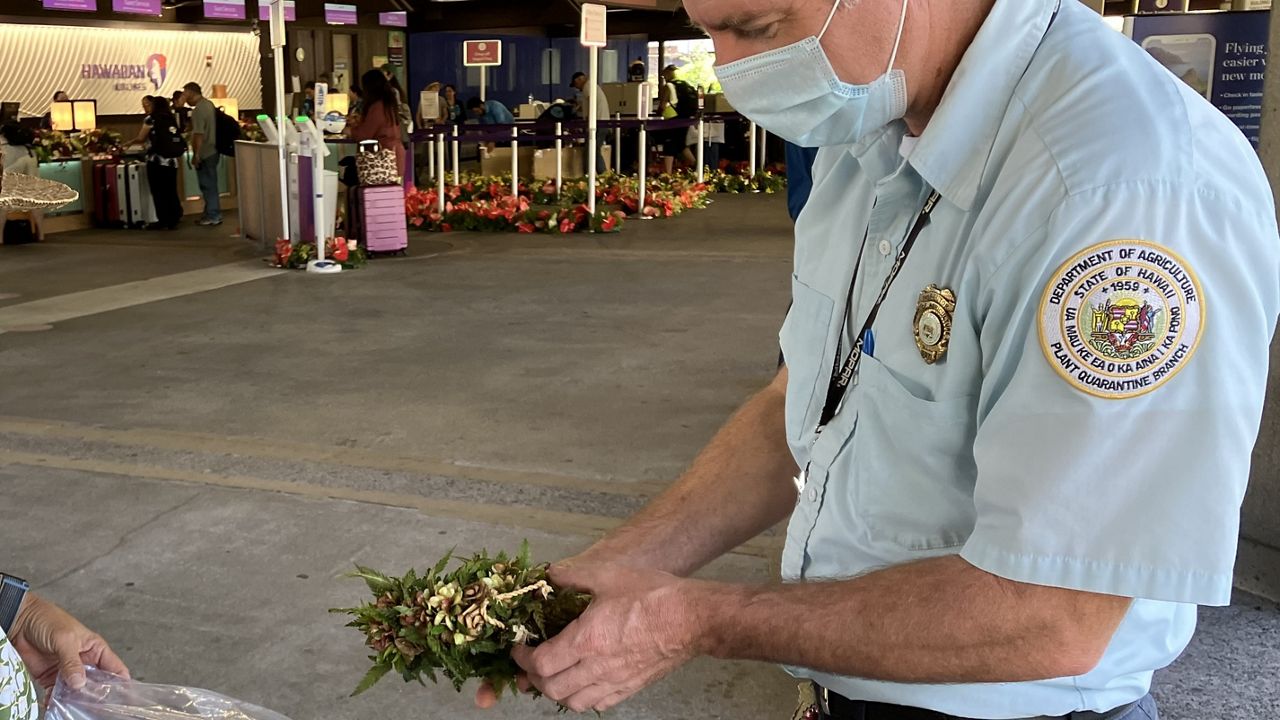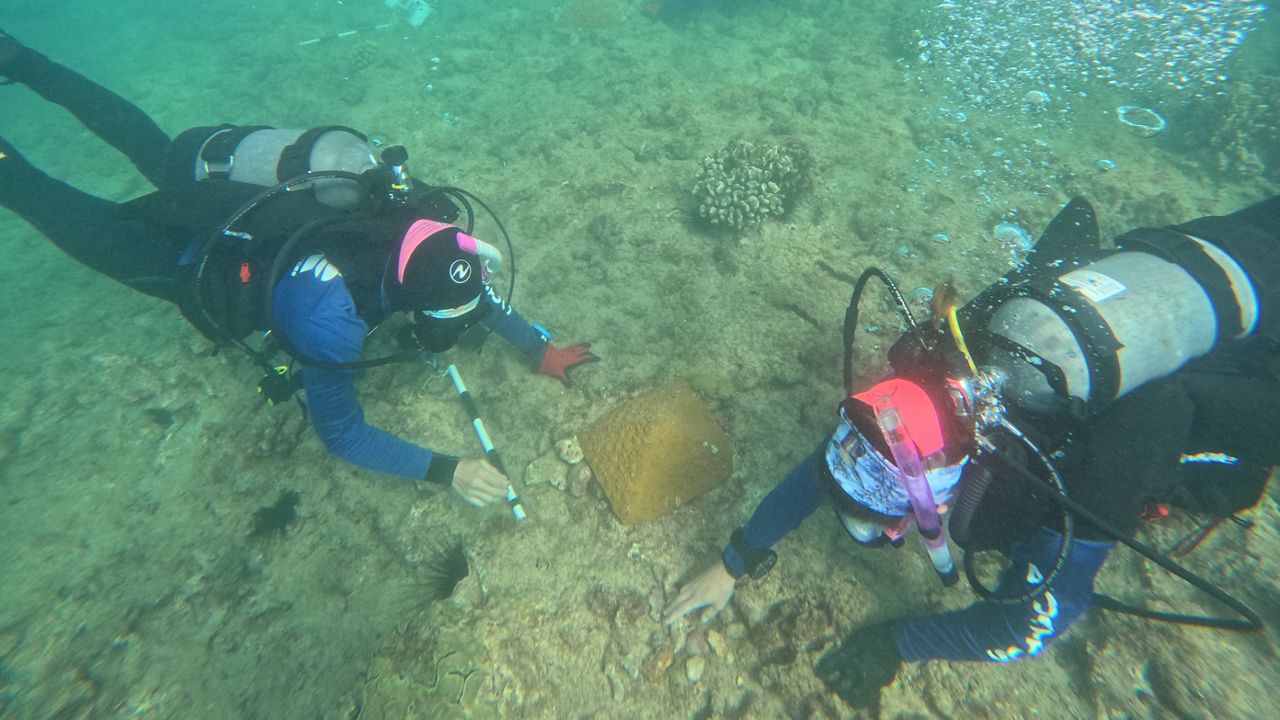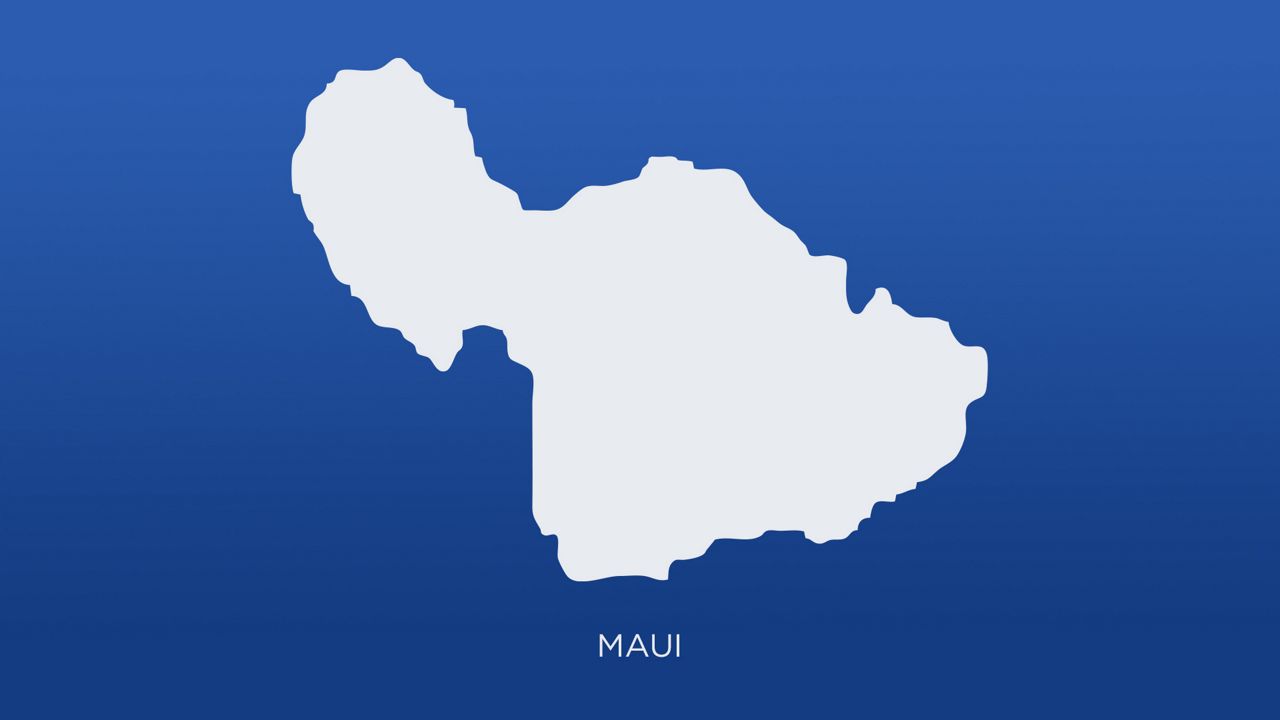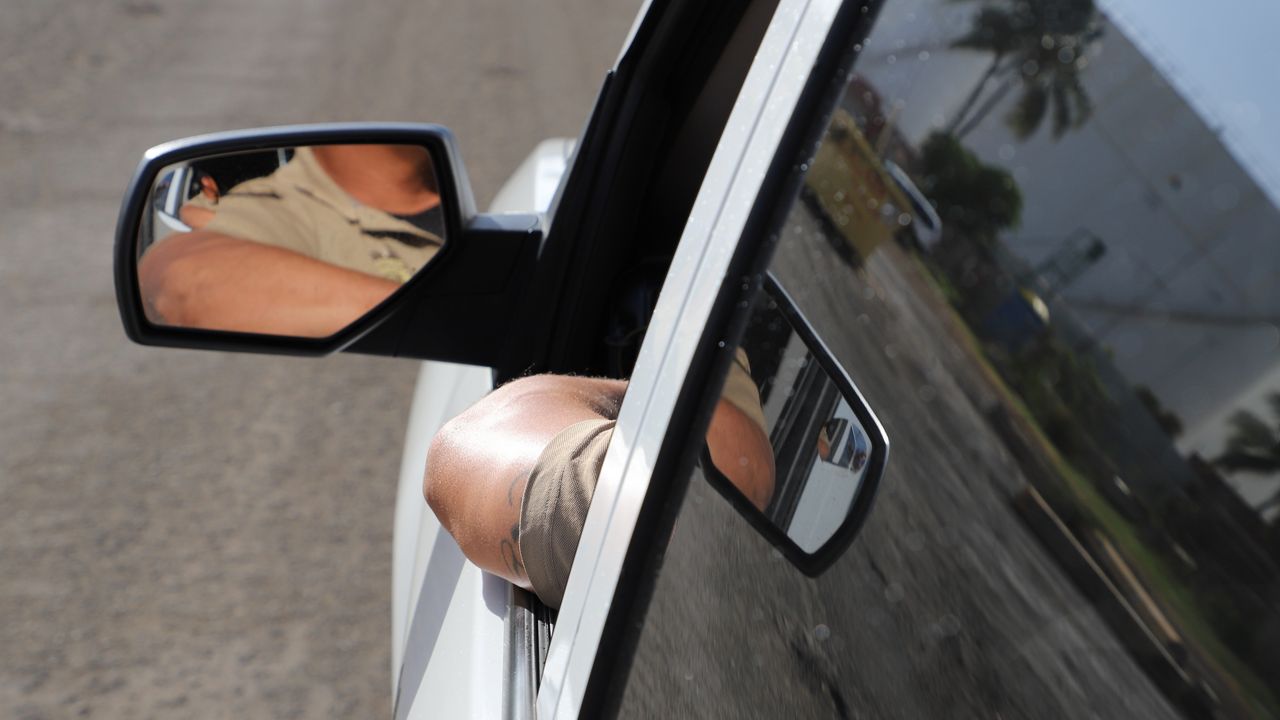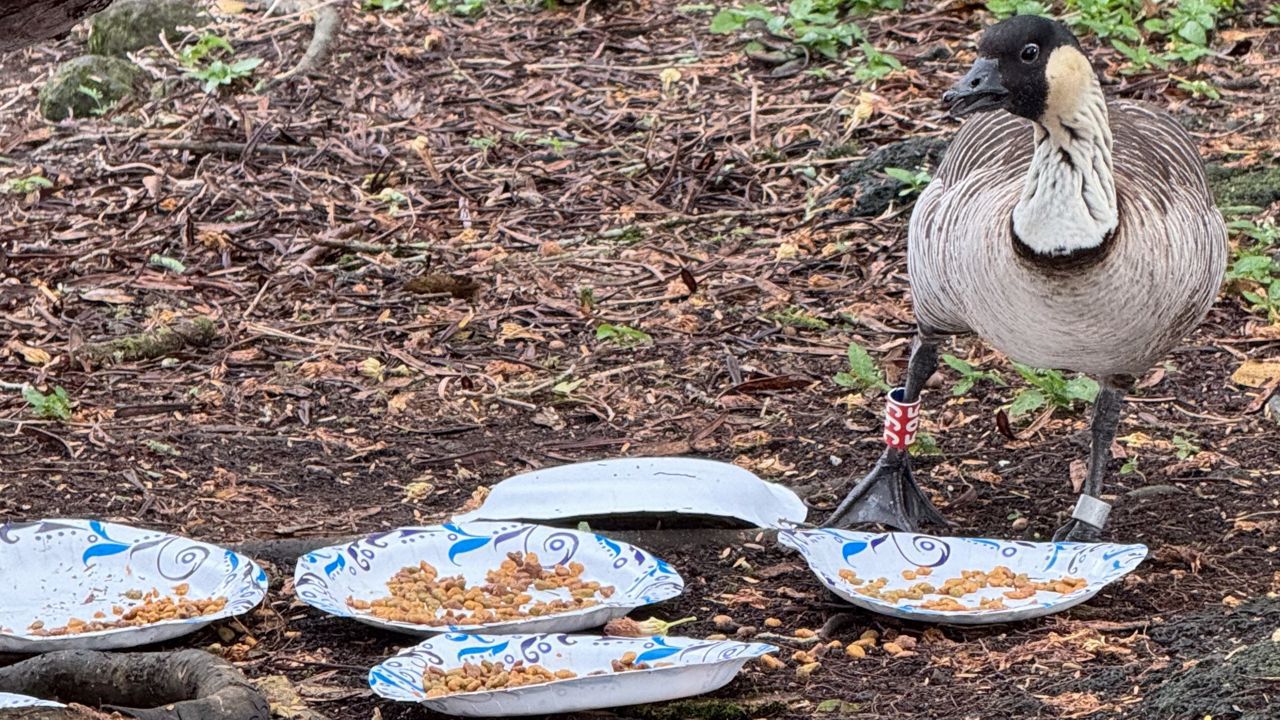HILO, Hawaii — Ahead of the Merrie Monarch Festival, the Hawaii Department of Agriculture sent a notice to remind people it is illegal to transport ʻōhiʻa out of Hawaii Island without a permit.
A quarantine was put into place in 2015 in order to stop the spread of rapid ʻōhiʻa death, a fungal plant disease, which is killing ʻōhiʻa lehua trees and devastating native forests.
The Merrie Monarch Festival will be held in Hilo from March 31 to April 6.
During last year’s Merrie Monarch, the HDOA Plant Quarantine Branch inspectors intercepted 31 lei poʻo (head lei) in Hilo and 12 lei poʻo in Kona, which included ʻōhiʻa materials, according to a news release.
“It’s important for the public to know, that although ʻōhiʻa may be taken to Hawaii Island from other islands, ʻōhiʻa may not be taken out of Hawaii Island no matter where it originated,” said Sharon Hurd, chairperson of the Hawaii Board of Agriculture, in the release.
HDOA issued the quarantine in Aug. 2015, which forbids taking ʻōhiʻa plants and plant parts, including flowers, leaves, seeds, stems, twigs, cuttings, untreated wood, logs, mulch, greenwaste, frass (sawdust from boring insects) and any soil out of Hawaii Island. People are only allowed to take ʻōhiʻa from Hawaii Island with a PQB-issued permit.
This year, inspectors will again be at the Hilo and Kona airports to intercept any ʻōhiʻa materials. HDOA will return any intercepted materials to Hawaii Island forests.
A violator of the quarantine may be charged with a misdemeanor and fined between $100 and $10,000. For a second offense committed within five years of a prior conviction, the violator will be fined between $500 and $25,000.
In 2010, rapid ʻōhiʻa death was first noticed in Puna. Recent research classified ROD into two distinct species: Ceratocystis lukuohia and Ceratocystis huliohia. About 1 million ʻōhiʻa trees have died from the disease on Hawaii Island.
ROD was noticed on Kauai in 2018 and Oahu in 2019. The disease was detected in a single tree on Maui in 2019, which was destroyed, and since then ROD has not been detected on the island.
The Merrie Monarch Festival draws hundreds of people to Hawaii Island every year. The HDOA emphasized that the act of harvesting ʻōhiʻa may spread the disease, because harvesting tools, vehicles, shores or soil can carry spores to uninfected areas.
HDOA provides more information about ROD on its website.
Michelle Broder Van Dyke covers the Hawaiian Islands for Spectrum News Hawaii. Email her at michelle.brodervandyke@charter.com.





